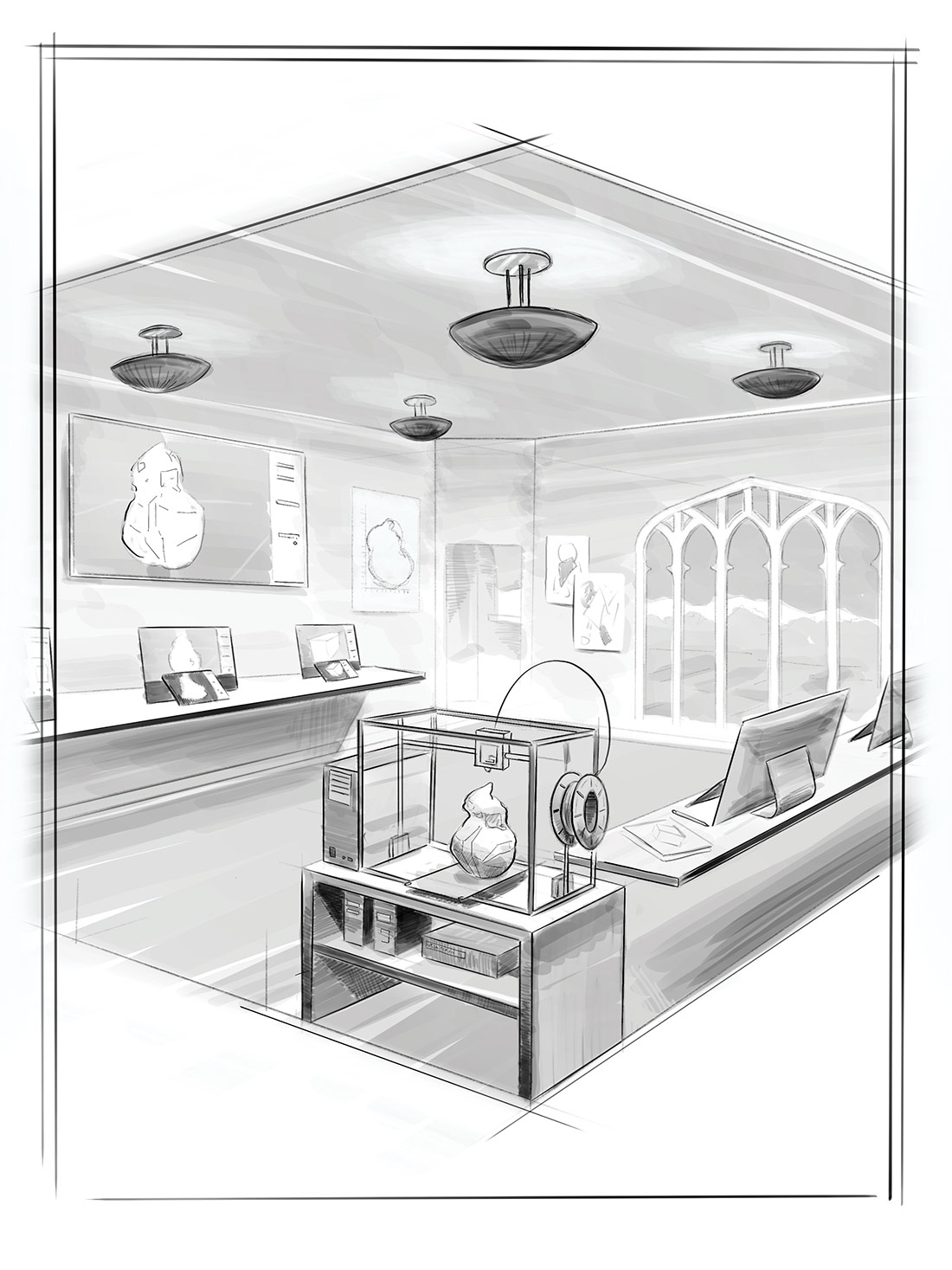
Art Meets Science
Westminster’s new makerspace pushes an interdisciplinary, creative agenda
by Rachel Terran (’18)
Over the past several years, there has been a movement to incorporate art into the sciences, which helps to explain Jaramillo Collaborative Arts Studio, Westminster’s new makerspace.
The studio and art programming were gifted by alumna Kimi Jaramillo Vlahakis (’96) and her husband, Nick. Kimi is an accomplished artist of Byzantine icon paintings, and Nick began his career as an engineer at ATK and advanced to become its chief operating officer.
They generously support higher education and chose to name this studio in honor of Kimi’s parents, Alviar and Nellie Jaramillo. Kimi and Nick established an arts scholarship for students and are now excited to provide a makerspace studio.
“The term ‘makerspace’ loosely defines a creative, interdisciplinary lab or studio,” says Matt Kruback, associate professor of art who led the creation of Westminster’s makerspace.
The Jaramillo Collaborative Arts Studio is equipped with machinery intended to drive creative projects and problem solving. Anyone who has access can use the space located on the third floor of Converse Hall.
The space will include digital drawing, illustration, and animation workstations: 3D printers, a CNC router, a laser printer, and a suite of power and hand tools for student use. The ways in which people can use the space are limitless.
The gift from Kimi and Nick helped the college obtain additional funds from the W.M. Keck Foundation so Westminster will be able to use the space for student research under the Scientists and Artists Learning Together (SALT) initiative.
“Nick and I have established respective foundations as part of our living trusts. A major focus is supporting education endeavors through a holistic approach that unites students from different disciplines in creative, collaborative settings,” explains Kimi. “The Jaramillo Collaborative Art Studio is a perfect match for our objectives.”
Westminster’s makerspace allows users to channel their inner child with the hope of inspiring fresh perspective.
“We tend to lose that sense of play and inquiry that we have as children and often need to dust off those skills we consider frivolous and not an effective use of our ‘real world’ time,” Matt says, adding that the makerspace gives people new ways of thinking about what is possible.
Matt’s goal is to support Westminster students, faculty, staff, and adjuncts. He envisions that this space will bring individuals together to think about things in a new way.
Down the road, this space could accompany classes in scientific illustration and visualization, as well as open opportunities for traditional 3D-animation classes. With accessibility to traditional 2D- and 3D-animation equipment, classes that currently exist have a wide range of new opportunities using the makerspace.
“The space is multifaceted in design, serving art students who are interested in digital drawing, animation, or 3D modeling and printing, as well as providing a space and opportunities for the entire Westminster community to solve problems through interdisciplinary thinking and academic play,” Matt says.
Matt developed the makerspace project with Westminster student Bex Kemp, who played a major role in planning and funding the project.
“It was kind of funny because in the beginning I didn’t even know Matt was doing this,” Bex says.
Matt was on sabbatical when Bex started a personal project to raise hype about a makerspace on campus.
“I was looking for funding on my own, and then I got on Matt’s project and we started talking about what the space would look like,” she says.
Over the summer, Bex conducted research under the SALT program to look at bird migration patterns using data visualization. Her interest in 3D printing and in visualizing data began in high school when she constructed her own functioning 3D printer.
Students like Bex are able to use the makerspace as a crossover between the hard sciences and the arts; however, there are no limitations on who can use the space. For example, an entrepreneurship student could use the space to visualize a business model, while a math student could come and visualize different problems.
One of the goals of the space is to accommodate the campus community, which means finding out what people need and placing machinery accordingly.
“I’ve been looking at makerspaces around the country for a few years now, and I’m amazed at how each space is geared toward the populations that use it,” Matt says. “I hope we are able to assemble a space that serves Westminster in the best way possible.”
About the Westminster Review
The Westminster Review is Westminster University’s bi-annual alumni magazine that is distributed to alumni and community members. Each issue aims to keep alumni updated on campus current events and highlights the accomplishments of current students, professors, and Westminster alum.
GET THE REVIEW IN PRINT STAY IN TOUCH SUBMIT YOUR STORY IDEA READ MORE WESTMINSTER STORIES
